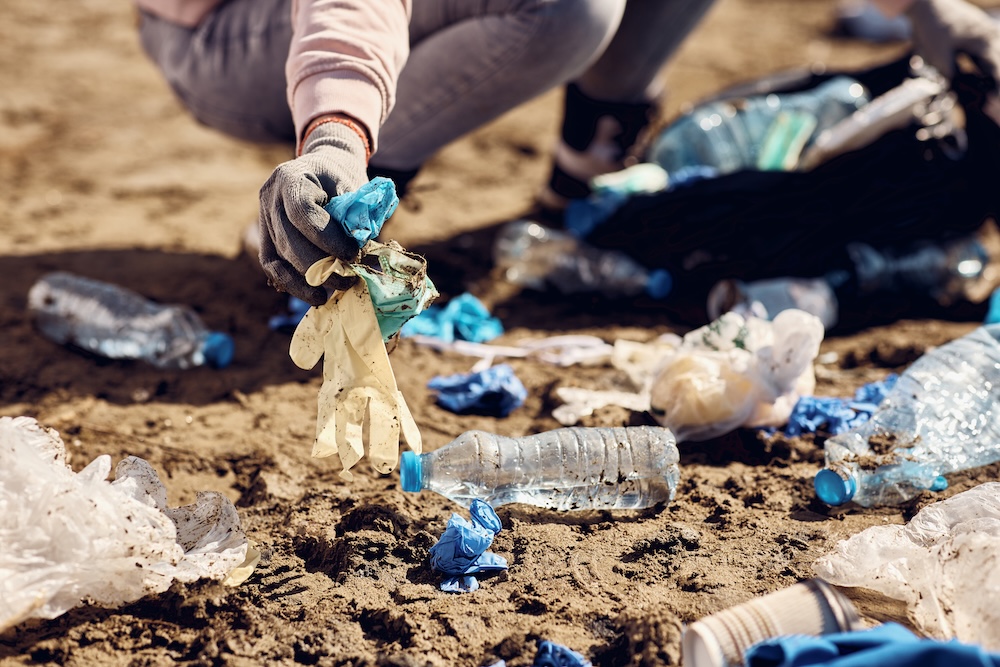What Is Plastic Pollution?
Plastic pollution is the accumulation of plastic materials in the environment—especially in oceans, rivers, and soil—that adversely affects wildlife, ecosystems, and human health. Unlike organic matter, plastics do not biodegrade; they break down into smaller pieces known as microplastics, which persist in nature for centuries.
From grocery bags and packaging to microbeads in cosmetics, plastic pollution is now found in every part of the planet—including remote mountain peaks, the deepest ocean trenches, and even the human bloodstream.
Why Is Plastic Pollution So Dangerous?
Plastics are durable, lightweight, and inexpensive to produce. These very traits, while beneficial for consumers, make plastics an enormous environmental hazard:
- They don’t break down naturally
- They accumulate in ecosystems
- They absorb and carry toxic chemicals
- They are often ingested by animals and humans
Plastic pollution threatens biodiversity, clogs waterways, leaches harmful substances into the soil, and has become one of the most pressing environmental issues of our time.
Types of Plastic Pollution
Macroplastics
Larger plastic items that are visibly polluting landscapes and water bodies:
- Bottles, bags, straws, and food containers
- Fishing gear and plastic nets
- Packaging waste
- Discarded toys and single-use items
Microplastics
Tiny plastic particles (less than 5mm) that result from the breakdown of larger plastics or are manufactured for specific products:
- Microbeads in personal care items
- Synthetic fibers from laundry
- Tire wear particles
- Degraded fragments from plastic litter
Nano Plastics
Even smaller than microplastics, these particles can pass through cell membranes and accumulate in organs. Research is still emerging, but early studies suggest alarming potential for biological harm.
Where Does Plastic Pollution Come From?
Consumer Waste
- Single-use plastics from food and retail packaging
- Improper waste disposal and littering
- Non-recyclable products thrown into regular trash streams
Industrial and Manufacturing Waste
- Plastic pellets (nurdles) spilled during transport
- Packaging waste from production lines
- Poorly regulated disposal practices
Clothing and Textiles
- Synthetic fabrics like polyester and nylon shed microfibers with every wash
- These fibers often bypass filtration systems and end up in waterways
Fishing and Maritime Industry
- Discarded nets, ropes, and equipment (ghost gear)
- Fishing lines lost at sea
- Plastic crates and containers used onboard
Environmental and Wildlife Impact
Marine Animals
- Turtles mistake plastic bags for jellyfish and ingest them
- Seabirds eat plastic fragments and starve with full stomachs
- Whales have been found with stomachs full of plastic debris
Ecosystems
- Coral reefs are harmed when plastic clogs or cuts their surfaces
- Coastal regions suffer from economic and aesthetic degradation
- Soil health declines as plastics accumulate in farmland and irrigation systems
Food Chain Contamination
Plastics absorb pollutants like PCBs, heavy metals, and pesticides. When consumed by small marine organisms, these toxins climb up the food chain, ultimately reaching humans.
Health Risks to Humans
- Ingestion of microplastics via seafood, salt, water, and even air
- Potential endocrine disruption from plastic additives like BPA and phthalates
- Unknown long-term effects as nano plastics enter organs and cross the blood-brain barrier
Plastic has been detected in human blood, lungs, breast milk, and even placental tissue. The full health implications are still being studied but raise serious concerns.
Why Recycling Isn’t Enough
Only about 9% of all plastic ever produced has been recycled. The rest ends up in landfills, incinerators, or the natural environment.
Barriers to Recycling:
- Mixed or contaminated plastics are hard to process
- Recycling is not cost-effective for many types of plastic
- Lack of infrastructure in developing countries
- Greenwashing by brands that label non-recyclable packaging as “eco”
Solutions to Plastic Pollution
What Individuals Can Do:
- Refuse single-use plastics (bags, utensils, straws)
- Choose products with minimal or no plastic packaging
- Use reusable containers, water bottles, and shopping bags
- Wash clothes with filters that catch microfibers
- Support businesses with sustainable packaging
What Businesses Can Do:
- Redesign packaging to be truly recyclable or compostable
- Implement take-back or refill programs
- Use alternative materials like paper, glass, or bioplastics
- Eliminate unnecessary plastics in product design
What Governments Must Do:
- Ban or limit single-use plastics
- Improve recycling infrastructure
- Mandate extended producer responsibility (EPR)
- Fund plastic alternatives and public education campaigns
Emerging Innovations
- Bioplastics made from algae, cornstarch, or mushroom mycelium
- Enzyme-based recycling that breaks plastics down to base molecules
- Plastic-eating bacteria (still experimental)
- Ocean cleanup systems targeting rivers and coastlines
Common Questions About Plastic Pollution
How long does it take plastic to decompose?
Some plastics can take 500 to 1,000 years to break down in the environment.
Are biodegradable plastics better?
Only if they decompose in real-world conditions. Many require industrial composting and won’t break down in landfills or oceans.
Is burning plastic a solution?
Incineration releases harmful toxins and greenhouse gases unless done in highly controlled environments with pollution controls.
Do reusable bags make a difference?
Yes—replacing disposable bags with a durable reusable one can reduce thousands of plastic bags over its lifetime.
Can we clean up all the plastic already in the ocean?
Cleanup technologies help, but prevention is more effective. Once plastic breaks into microplastics, it becomes nearly impossible to remove.
Final Thoughts
Plastic pollution is everywhere—visible on beaches, floating in rivers, and hiding in the food we eat. But it’s not inevitable. With conscious choices, policy changes, and innovation, we can curb this crisis. The goal isn’t just to reduce waste—it’s to reimagine a world where convenience doesn’t come at the planet’s expense.









Reader Interactions